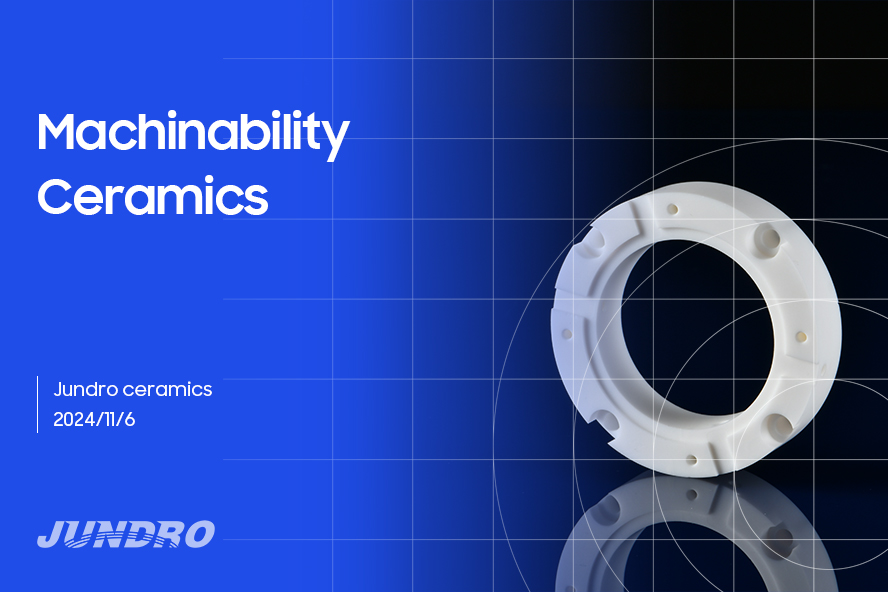
What is the Machinability of Ceramics
In industrial applications, the machinability of ceramic materials has always been a key parameter, reflecting the ability of ceramic materials to be formed or improved using processing techniques. The inherent brittleness and tendency to crack under stress of most ceramics pose challenges to achieving high processability, despite their advantages such as hardness, chemical stability, and heat resistance.
Key Factors in Ceramic Machinability
Material Composition and Microstructure
The machinability of ceramics is strongly influenced by their composition and internal structure. Certain glass-ceramics, like those containing fluor-phlogopite, exhibit enhanced machinability when processed with conventional metal-cutting equipment. These ceramics maintain mechanical properties at high temperatures, especially when optimized with additives such as ZrSiO₄, which improves high-temperature strength
Composition and Performance Table of Ceramic Materials
This chart displays the main components of different materials
Material type | Composition (main oxides) | Hardness (GPa) | Fracture toughness (MPa · m ¹/²) | Elastic modulus (GPa) | Characteristic |
Aluminum oxide (Al₂O₃) | Al₂O₃ (>95%) | 15-20 | 3-4 | 350-400 | High hardness, difficult to machine |
Zirconia (ZrO₂) | ZrO₂ (>90%) + Y₂O₃Stabilizer (3-5%) | 10-12 | 8-10 | 200-220 | High toughness, relatively easy to process |
Silicon nitride(Si₃N₄) | Si₃N₄ + Y₂O₃, Al₂O₃Additive | 13-15 | 6-7 | 300-310 | High toughness, moderate hardness |
Aluminum nitride(AlN) | AlN (>90%) | 11-13 | 2-3 | 320-340 | High thermal conductivity, fragile |
Macor glass ceramic | SiO₂, MgO, Al₂O₃, K₂O, F | 4-5 | 1-2 | 65-70 | Good processability, low hardness |
Brittleness Index and Fracture Toughness
The brittleness of ceramic materials is a limiting factor in machinability. A brittleness index, defined as the ratio of hardness to fracture toughness, can be used to predict machinability; a lower index correlates with improved machinability. Glass-ceramics with brittleness indices below a critical threshold (B ≈ 4.3 μm⁻¹²) show improved machinability due to reduced brittleness
Design of Machinable Composites
Advances in material science have led to the creation of machinable composites by introducing phases that weaken the bond between ceramic grains. For example, γ-Y₂Si₂O₇ exhibits quasi-plastic behavior due to weakly bonded Y-O planes, allowing for easier deformation under stress. This design approach aims to mitigate brittleness while preserving other desirable properties of ceramics
The relationship between brittleness index and machinability of ceramics
This chart displays the brittleness index (hardness to fracture toughness ratio) of different materials
Material type | Hardness (GPa) | Fracture toughness (MPa · m ¹/²) | Brittle index(B, μm⁻¹²) | workability |
Aluminum oxide (Al₂O₃) | 18 | 3.5 | 5.14 | Difficult to process |
Zirconia (ZrO₂) | 11 | 9 | 1.22 | Easy processing |
Silicon nitride(Si₃N₄) | 14 | 6 | 2.33 | Medium processability |
Macor glass ceramic | 4.5 | 1.5 | 3.0 | Machinable |
Processing Methods and Cutting Parameters
Experimental studies have demonstrated that factors like cutting speed, feed rate, and tool wear significantly affect machinability outcomes. For instance, turning and milling tests on high-strength porous Si₃N₄ ceramics revealed that lower cutting speeds and feed rates yield smoother finishes, while excessive cutting speeds increase surface roughness and tool wear
Innovative Machining Techniques
Chemically assisted machining has emerged as a novel approach to ceramic machining, leveraging chemical reactions at the tool-workpiece interface to reduce stress and prevent surface damage. Tests involving silicon nitride and diamond wheels have shown promise in reducing tool wear and achieving finer finishes
Machining process and parameter table
Compare the cutting speed, feed rate, and tool type required for processing different ceramic materials (for reference only)
Material type | Cutting speed (m/min) | Feed rate (mm/rev) | Recommended tool types | SURFACE QUALITY |
Aluminum oxide (Al₂O₃) | <30 | 0.05-0.1 | Diamond cutting tools | Surface is relatively rough |
Zirconia (ZrO₂) | 30-50 | 0.1-0.2 | Hard alloy or diamond cutting tools | smooth |
Silicon nitride(Si₃N₄) | 20-25 | 0.05-0.1 | Diamond cutting tools | Medium smoothness |
Macor glass ceramic | 100-300 | 0.2-0.3 | carbide tool | smooth |
Dongguan Jundro ceramics Technology Co.,Ltd
E-mail:info@jundro.com
Tel:+86-769-82913501
Fax:+86-769-82913801
Add: Room 306, Gate B, Unit 1, Block 2 South, No. 1 Yile Road, Songshan Lake, Dongguan City, Guangdong Province, China(523808)
© August Dongguan Jundro ceramics Technology Co.,Ltd- 2023